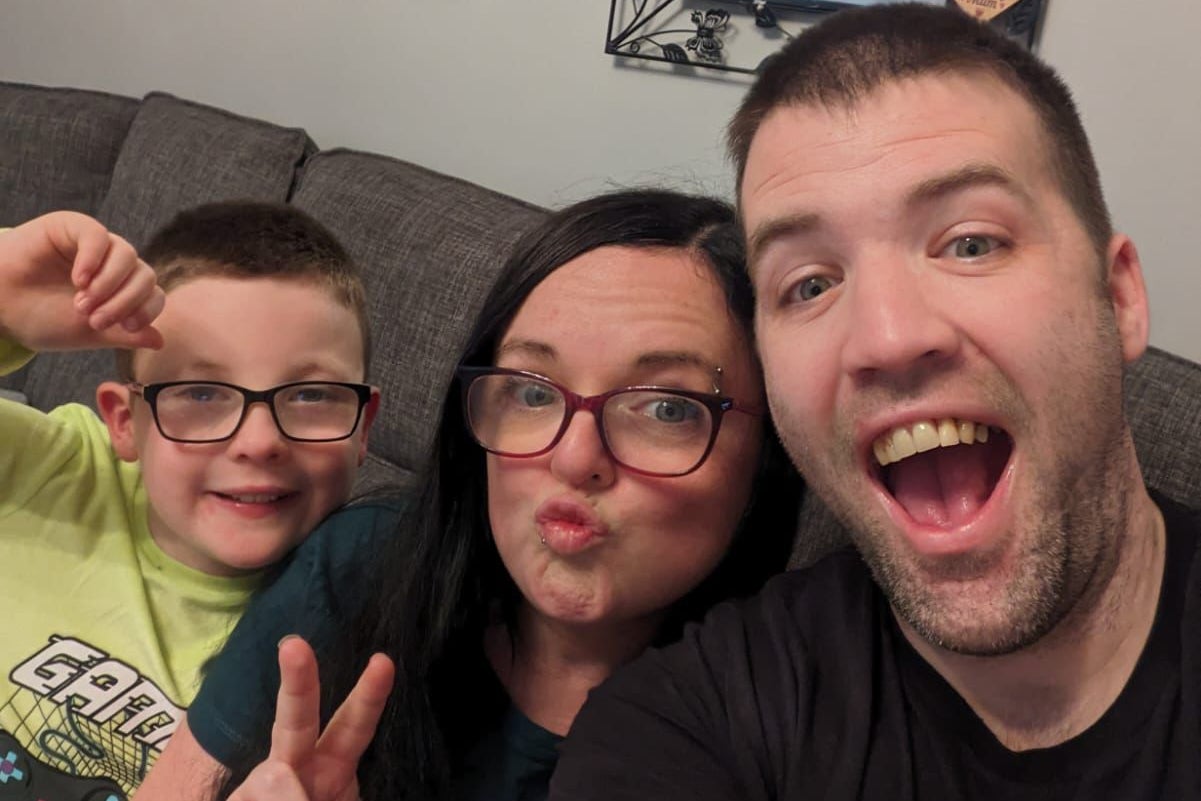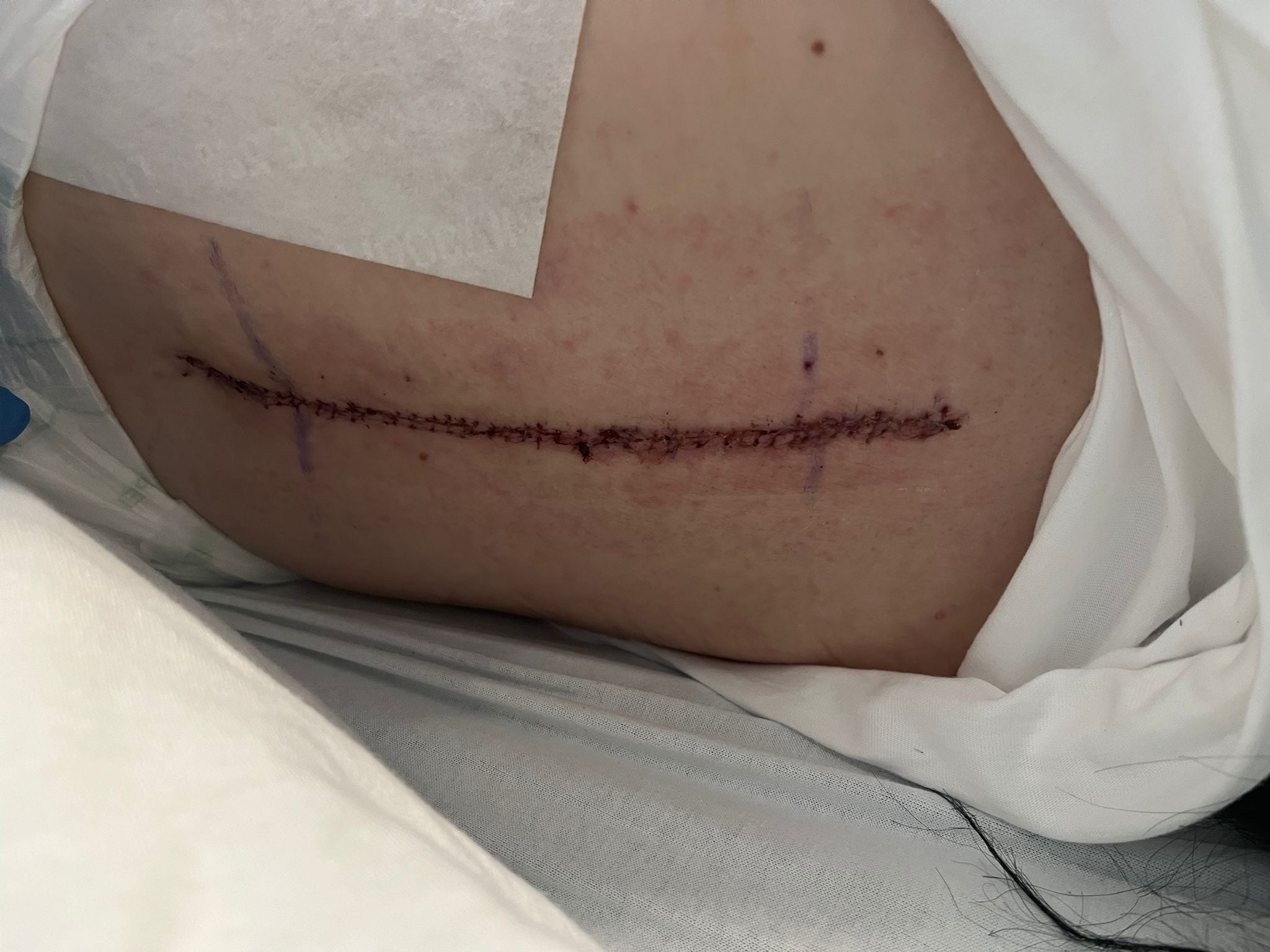Mum Finds Spinal Tumor Before Wedding After Decade-Long Back Pain Struggle
A mother who suffered through ten years without a diagnosis
back pain
Before a spinal tumor was identified, she is set to walk down the aisle at her wedding this July.
Julie Coleman, who is 33 years old, initially felt discomfort in her back and legs when she became pregnant in 2014. At first, doctors thought it might be sciatica and suggested that the pain should subside following childbirth; however, this did not occur for Julie. She has been dealing with ongoing pain for nearly ten years now.
visited her GP
, experiencing shooting pains in her legs, was then prescribed pain medication along with physical therapy.
The continuous battle caused Julie, who formerly served at Alzheimer’s Scotland and is currently beginning a work-from-home customer service position, to believe that she might endure agony indefinitely. She mentioned losing faith in her general practitioner clinic. Ultimately, in November 2024, an MRI scan exposed a
large benign tumour
developing within her spinal cord.
Facing the risk of paralysis, Julie underwent surgery to remove the tumour in January 2025. However, the tumour had already caused nerve damage, resulting in a spinal cord injury that leaves her with no feeling below her right knee.

Even so, Julie is resolved to make her way down the aisle using crutches at her wedding this July. She and her fiancé, Stephen, who is 35 years old, plan to remain seated throughout the ceremony.
The pair, along with their 10-year-old child named Connor, have initiated a GoFundMe campaign to assist with unforeseen expenses linked to Julie’s health situation.
“Obviously, I never pictured myself walking down the aisle like this, and nobody expects to grow up unable to make their way down the aisle without assistance,” Julie shared with PA Real Life.
“I was determined to walk down the aisle if it was a possibility and I’m very grateful I’m able to walk down – even if I do need a walking aid.
“I think we take our bodies for granted and if you feel something isn’t right, keep pushing for answers.”
Julie first experienced back pain and “shooting” pains down her right leg when she was pregnant with her son in 2014.
Following her visit to an unnamed general practitioner clinic, it was believed that Julie was suffering from sciatica – nerve pain resulting from irritation of the sciatic nerve – which was expected to improve after she had given birth.
“I spent the last six months of my pregnancy sitting up in bed, I couldn’t lie down because it was too painful,” she said.
Julie said the pain did not go away after giving birth and she spent the next 10 years seeing numerous doctors at her GP surgery, having physiotherapy sessions and being prescribed painkillers.

“I was told it was sciatica caused by a slipped disc in my back,” she said.
“They said there’s no point sending you for any scans because the back surgery is too dangerous.
“It was extremely frustrating and it got to the point where I probably lost trust in my GP because I knew they weren’t going to do anything.
“I was going to several different GPs within the same practice and they were all saying the same thing.
“I just thought this is me for the rest of my life.”
She also started experiencing numbness in her right foot in 2022, which started in her toes and began “creeping” into her foot.
In November 2024, Julie scheduled another visit with a different physiotherapist who then recommended that she undergo an MRI of her lower back. ThisMRI examination occurred on December 24 at the Stobhill Hospital located in Glasgow.
Julie said her physiotherapist called her on New Year’s Eve to say the scan had revealed “changes in my spinal cord”.
On January 9, Julie had an appointment with a neurosurgeon at the Queen Elizabeth University Hospital in Glasgow, where she had a full MRI scan on her spine and head.
Later that day, she was told a large tumour was growing inside her spinal cord – the suspected cause for the symptoms she had been experiencing for the last 10 years.
“I was really shocked as I had been trying to say something was wrong the whole time,” she said.
Julie was told there was a risk she could become paralysed in future with nerve damage caused by the tumour, and an operation to remove it would be the best course of action.
Even with the surgery, she was told there could be risks and some of her symptoms may not be “reversed”.
Julie had the operation to remove the tumour on January 28 at the Queen Elizabeth University Hospital and she said she was “very grateful” to the doctors who treated and supported her.

She said the surgery was “successful” and most of the tumour was removed, but as some fragments could remain, she will have an MRI scan in August to get a clearer picture.
Tests were also conducted on the tumour where it was found to be a schwannoma, an uncommon, non-cancerous tumour that covers the nerves, according to
Cancer
Research UK.
Despite the success of the operation, the damage to Julie’s nerves may have been done – as she was diagnosed with a spinal cord injury while in hospital and she cannot feel anything below her right knee.
Since returning home on February 18, Julie uses a Zimmer frame to move around her home and needs a wheelchair for longer distances.
“I have random patches on my legs and stomach that are completely numb,” she said.
“Most of my pain was down my right leg so that has obviously had the most damage to the nerves.”
Julie added it could take up to two years to determine whether her symptoms will be permanent as there is a chance her feeling could return.
She and her fiance, Stephen, are due to tie the knot in July – and Julie said her son will be walking her down the aisle where she will use crutches.
Julie has also launched a GoFundMe page to help her and her family with any unexpected costs due to her condition, raising £225 so far.
To find out more, visit Julie’s fundraiser here: gofundme.com/f/help-julie-cover-unexpected-costs-after-spinal-cord-tumour
The Independent is the world’s most free-thinking news brand, providing global news, commentary and analysis for the independently-minded. We have grown a huge, global readership of independently minded individuals, who value our trusted voice and commitment to positive change. Our mission, making change happen, has never been as important as it is today.




